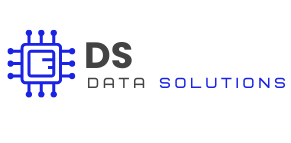In the world of data analysis, SQL (Structured Query Language) is one of the most fundamental tools. Known for its ability to efficiently store, retrieve, and manipulate data, SQL is widely used across industries to manage databases and drive data-driven decision-making. This article introduces SQL, explaining what it’s used for and what it can do for data analysis.
What is SQL?
SQL is a programming language designed for managing and manipulating data in relational databases. Unlike programming languages such as Python or Java, SQL is specifically tailored to work with databases, enabling analysts and developers to interact with large data sets quickly and accurately. SQL’s structure allows users to define, update, retrieve, and manage data in tables, which are the core structures in relational databases.
Why is SQL Important in Data Analysis?
SQL is essential in data analysis because it enables businesses to efficiently organise, access, and analyse data. Here are a few reasons why SQL is widely used in data analysis:
- Efficient Data Management: SQL allows for the seamless organisation and retrieval of data, making it easier to work with structured data in relational databases.
- Data Extraction: SQL queries can retrieve specific information from large data sets, which is crucial for generating reports and insights.
- Data Transformation: SQL can be used to clean, filter, and transform data, preparing it for further analysis or visualisation.
- Widely Used Across Industries: SQL’s adaptability and ease of use make it a valuable tool for data analysts in finance, healthcare, retail, tech, and many other fields.
What SQL Can Do in Data Analysis
SQL’s capabilities go far beyond simple data retrieval. Here’s an overview of the most common tasks SQL can perform in data analysis:
1. Data Retrieval
The primary function of SQL in data analysis is retrieving specific data from large databases. By writing SQL queries, analysts can quickly access the exact information they need. Whether you’re pulling all records for a particular year or selecting only high-value customer data, SQL enables efficient data extraction.
Use Case: A retail analyst might use SQL to retrieve all customer transactions from the past year to study seasonal buying patterns. This type of retrieval helps analysts focus only on the data relevant to their analysis, reducing unnecessary processing.
2. Filtering and Sorting Data
SQL provides powerful filtering and sorting capabilities, which allow analysts to refine their data to meet specific criteria. Using conditions and filters, SQL queries can narrow down data based on factors like date range, region, customer type, or product category. Sorting functions allow analysts to organise data in ascending or descending order, making it easier to identify trends or outliers.
Use Case: A financial analyst might use SQL to filter transactions over a certain amount, focusing only on high-value sales. This type of filtering enables them to segment data by importance and relevance.
3. Aggregating Data for Summarisation
Data aggregation is a core feature of SQL, allowing analysts to summarise data through functions like COUNT, SUM, AVERAGE, MIN, and MAX. By aggregating data, SQL can provide insights into key metrics, such as total sales, average order value, or highest and lowest prices. This ability to summarise data quickly is invaluable for generating business intelligence reports.
Use Case: An e-commerce company might use SQL to calculate the average order value over the last quarter, allowing them to assess changes in customer purchasing behaviour.
4. Joining Tables to Combine Data
One of SQL’s most powerful features is its ability to join tables, allowing analysts to combine data from multiple sources within a database. SQL joins enable data analysts to bring together customer data, order history, and product details, for example, creating a comprehensive view of relationships within the data. Joining tables is essential for merging datasets and performing complex analysis.
Use Case: A marketing team might use SQL to join tables containing customer demographics and purchase history, enabling them to see which customer segments are purchasing certain products.
5. Data Cleaning and Transformation
Before data can be analysed, it often needs to be cleaned and transformed. SQL is highly effective for data cleaning tasks, such as removing duplicates, handling missing values, and converting data types. SQL allows analysts to modify existing data within a database without needing to export it into another tool, streamlining the entire workflow.
Use Case: A healthcare analyst might use SQL to clean patient data by removing duplicate entries or correcting formatting errors, preparing it for analysis on patient outcomes.
6. Creating and Managing Views
SQL allows analysts to create views, which are virtual tables generated by a SQL query. Views provide a simplified representation of complex queries and can be saved for later use. They allow users to access a pre-filtered or summarised version of the data without rewriting the SQL query each time. Views are especially useful for recurring reports, saving time and maintaining consistency.
Use Case: A sales analyst might create a view that summarises monthly sales by region. This view can then be used by team members to monitor regional performance without running the same query repeatedly.
7. Building Reports and Dashboards
SQL enables businesses to automate report generation and build dashboards for tracking performance metrics. By querying data directly from databases, SQL provides a reliable and up-to-date foundation for real-time reports and dashboards. Many business intelligence tools, such as Power BI and Tableau, use SQL to connect with databases, allowing users to pull data directly into interactive reports and visualisations.
Use Case: A finance team might use SQL queries within a reporting tool to generate daily sales reports, providing managers with real-time data on sales performance.
8. Supporting Machine Learning and Predictive Analysis
While SQL itself isn’t designed for machine learning, it plays a supportive role in preparing data for machine learning and predictive analysis. SQL’s data extraction, cleaning, and transformation capabilities make it easier to prepare large datasets for machine learning models, which often require structured, well-organised data.
Use Case: A data science team might use SQL to pull and preprocess customer data for a churn prediction model, ensuring that the dataset is clean and ready for machine learning algorithms.
Benefits of Using SQL in Data Analysis
SQL offers several advantages in data analysis, making it a must-have skill for analysts:
- Efficiency: SQL enables fast querying and data manipulation, even in large databases.
- Flexibility: SQL can handle complex data manipulation tasks, such as joining multiple tables and aggregating data.
- Compatibility: SQL integrates well with business intelligence tools like Power BI, Tableau, and Looker, as well as programming languages like Python and R.
- Data Security: With SQL’s built-in permissions and roles, data can be accessed securely, ensuring that sensitive information remains protected.
- Automation: SQL queries and views can be automated for routine reporting, saving time and reducing manual work.
Common SQL Tools and Database Management Systems
To work with SQL, it’s essential to understand the common database management systems (DBMS) that support it. Each DBMS has its unique features, but they all use SQL for data management.
- MySQL: A popular, open-source relational database system widely used in web applications.
- PostgreSQL: Known for its advanced features, PostgreSQL is often used for complex applications requiring scalability.
- Microsoft SQL Server: Commonly used in corporate settings, it integrates well with other Microsoft products, including Azure.
- SQLite: A lightweight database system often used in mobile applications and small-scale projects.
- Oracle Database: Known for its robustness, Oracle is popular in enterprise environments requiring high performance and security.
Each of these systems offers powerful tools for data analysis, and knowing how to write SQL queries makes it easy to work across different platforms.
Why SQL is Essential for Aspiring Data Analysts
For aspiring data analysts, SQL is a foundational skill that opens the door to data manipulation, analysis, and reporting. It allows analysts to access and prepare data efficiently, making it ready for further analysis or visualisation. By learning SQL, data analysts can handle structured data, work seamlessly with databases, and support advanced data analytics and reporting tasks.
SQL is not only practical but also adaptable, as it integrates well with programming languages like Python and R, enabling analysts to create end-to-end data workflows. Its importance in data analysis makes it one of the most valuable skills for anyone pursuing a career in data.
Getting Started with SQL
For beginners, learning SQL is a straightforward process, especially when starting with basic queries. Online courses, tutorials, and interactive coding platforms like SQLZoo or W3Schools offer practical exercises to help new users build a strong foundation. As you progress, you can dive into more advanced topics like subqueries, indexing, and performance optimisation.
Unlock Data Analysis Potential with DS Data Solutions
SQL is an invaluable tool in data analysis, enabling businesses to retrieve, manipulate, and analyse data efficiently. At DS Data Solutions, we help organisations harness the power of SQL to organise and analyse their data effectively. Whether you’re looking to optimise data retrieval, build custom reports, or prepare data for machine learning, our team has the expertise to help you achieve your goals.
Ready to leverage SQL for your data analysis needs? Contact DS Data Solutions today to learn how our SQL expertise can streamline your data workflows and drive actionable insights.


